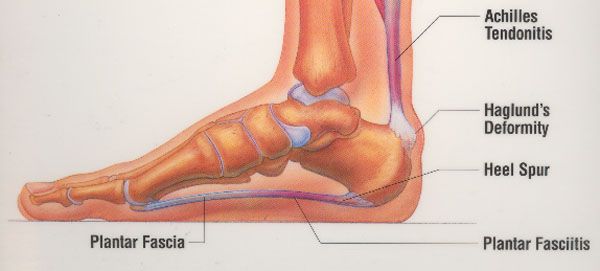Achilles Heel Spur

Heel spurs can be located at the back of the heel or under the heel beneath the arch of the foot.
Achilles heel spur. This painful condition is often related to the chronic tugging of a tight achilles tendon on the heel bone calcaneus. The bone spur gradually develops around the tendon where it inserts into attaches to the bone. The bone spur can irritate the achilles tendon potentially causing more tendon damage. Without visible x ray evidence.
With a contraction of the calf muscles which is needed for walk run or jump the achilles tendon stretches causing a friction at the surface of a heel bone. A heel spur also called retrocalcaneal exostosis or an achilles heel spur is the overgrowth of bone on the back of the heel. This bone spur can result in additional strain on to the achilles tendon resulting in irritation and inflammation of the tendon and interfere with its functionality. Achilles tendonitis occurs when the tendon that attaches the calf muscles to the heel becomes painful or inflamed.
This condition usually affects the retrocalcaneal bursa which is a fluid filled sac located near the heel where the calf muscle attaches to the heel bone. See achilles tendonitis and tendon injuries. Heel spurs at the back of the heel are frequently associated with inflammation of the achilles tendon tendinitis and cause tenderness and heel pain made worse while pushing off the ball of the foot. An achilles tendon bone spur can be caused due to overgrowth of bony tissue at the point of insertion of the achilles tendon with the heel bone.
Insertional achilles tendonitis affects the back of the heel where the achilles tendon inserts into the heel bone. If a bone spur near the achilles tendon rubs on nearby tissues it can lead to bursitis in the heel area. Common causes include exercising without a proper warm up and playing sports that. In many cases the condition results in the growth of additional bone and scar tissue in the achilles tendon also known as tendinosis.
Nevertheless they can be associated with heel pain and tenderness of the tissues adjacent to the spur such as on the bottom of the heel or the back of the heel where the ligament plantar fascia or achilles tendon attach. Heel spurs themselves usually cause no symptoms. The achilles tendon and the inflammation at the joint area are other factors that contribute to heel spur formation. The first step of treatment is to reduce inflammation.
A heel spur is a calcium deposit causing a bony protrusion on the underside of the heel bone.














































